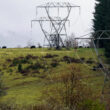The northern spotted owl, to be blunt, is not a popular resident in east Linn County, reasons not all its fault.
The fluffy fowl, which weighs about a pound, has become the face of environmentalists’ campaign to shut down, or greatly reduce, logging in the Willamette National Forest and lots of other federal forestland across the West.
We’re not telling anyone anything they didn’t already know. But the spotted owl has hit the headlines again with the quiet designation of 9.3 million more acres of federal timberland that is being designated as “critical habitat” for the federally protected bird, as we reported in last week’s issue. That includes much of the Willamette National Forest and the Sweet Home Ranger District.
In news reports, environmentalists have expressed concerns about the “broad license” the new rule gives to on-the-ground management. That, precisely, is what is good about the plan.
When forest administrators say they’re realizing that simply shutting down logging in federal forests isn’t going to work any more, we say that sounds like a much more even-handed approach than the philosophy that has been driving forest management for the past 20 years.
At the risk of stating the obvious, the problem for the spotted owl is that human efforts to preserve it have not only damaged a lot of human lives, including many here in east Linn County, but they haven’t really worked. The original court decrees and preservation plans that maintained the near-cessation of commercial forest uses, particularly timber harvest, in the local ranger district were based on scientific “evidence” trotted out by opponents to logging, that was rudimentary at best.
Key aspects of that evidentiary framework, such as the owls’ true range and habits, and how the species is impacted by factors other than old-growth forest logging, are subject to honest challenge but in the legal momentum and general emotionalism of the time, it is questionable whether the policies developed by the government to protect the owl were based on very substantive scientific knowledge.
While this was becoming increasingly evident over time, hard-working, industrious communities such as Sweet Home experienced massive job losses and social upheaval thanks to knee-jerk reactions by the courts and government agencies that were bound to follow judicial and executive dictates, which is exactly what opponents to logging wanted when they went to court.
More recently, the encroachment of the larger barred owl on the spotted owl’s territory is one of the threats that has become evident and for which few have answers. The spotted owl numbers, the U.S. Fish and Wildlife Service says, have declined 40 percent in 25 years. To combat the barred owl threat, the latest plan, announced last spring, was to shoot the rival birds.
So here we are in Sweet Home, sitting next to a national forest that is overgrown and increasingly looks like a giant catastrophe waiting to happen the first time we have a long, dry summer with lightning strikes or careless humans.
The very fact that forest undergrowth has not been reduced by fire – or blades – in two or more decades makes us wonder if that could be a contributing factor to the spotted owls’ continued demise. After all, their favorite prey is wood rats and if the forest is thick with undergrowth, that must give the rats an advantage.
We appreciate the fact that lawmakers and local forestry officials are cognizant that something needs to be done.
What needs to happen is what is being proposed. The government needs to stick to its guns and fight for truly healthy forests that can still be hiked in and camped in and otherwise enjoyed by mostly weekend visitors, on whom the impacts of fire and loss of employment and other economic hardships are simply footnotes.
Environmental extremists aren’t backing off in their fight to return the forests to some level of the state they were in before all of us arrived. In late November a court order suspended timber sales on more than 1,600 acres in three older coastal state forests due to concerns over marbled murrelet habitat. On Dec. 3 the U.S. Supreme Court heard a case originating when a small environmental group in Portland sued the Oregon Department of Forestry over logging roads that drain muddy water into salmon streams.
Having said that, balance is key. None of us want to see salmon populations decimated and we aren’t eager to see the marbled murrelet wiped out – or the spotted owl, for that matter. The owl is simply a symbol in battles between humans with vastly different perspectives on the utilization of forest resources.
But we do believe that our public policy in the area of forest management has not hit the “sweet spot,” as one forest administrator put it, of protecting wildlife and forest resources while allowing responsible use of the latter. The very fact that wildlife biologists and local hunters maintain there are more game animals on private land than in the overgrown national forest tells us these efforts on behalf of the spotted owl aren’t helping other species. It’s a tricky balance.
Few in our community would argue that the pendulum of sanity is in a neutral position right now, but the excesses of hands-off management are beginning to take their toll and that momentum may shift somewhat, particularly if the voting masses who don’t live near the forests, and their legislators and judges, become more aware of the problems caused by “environmentalists” who are pushing policies we believe are detrimental to forest stewardship.
We hope they wake up before it’s too late.




